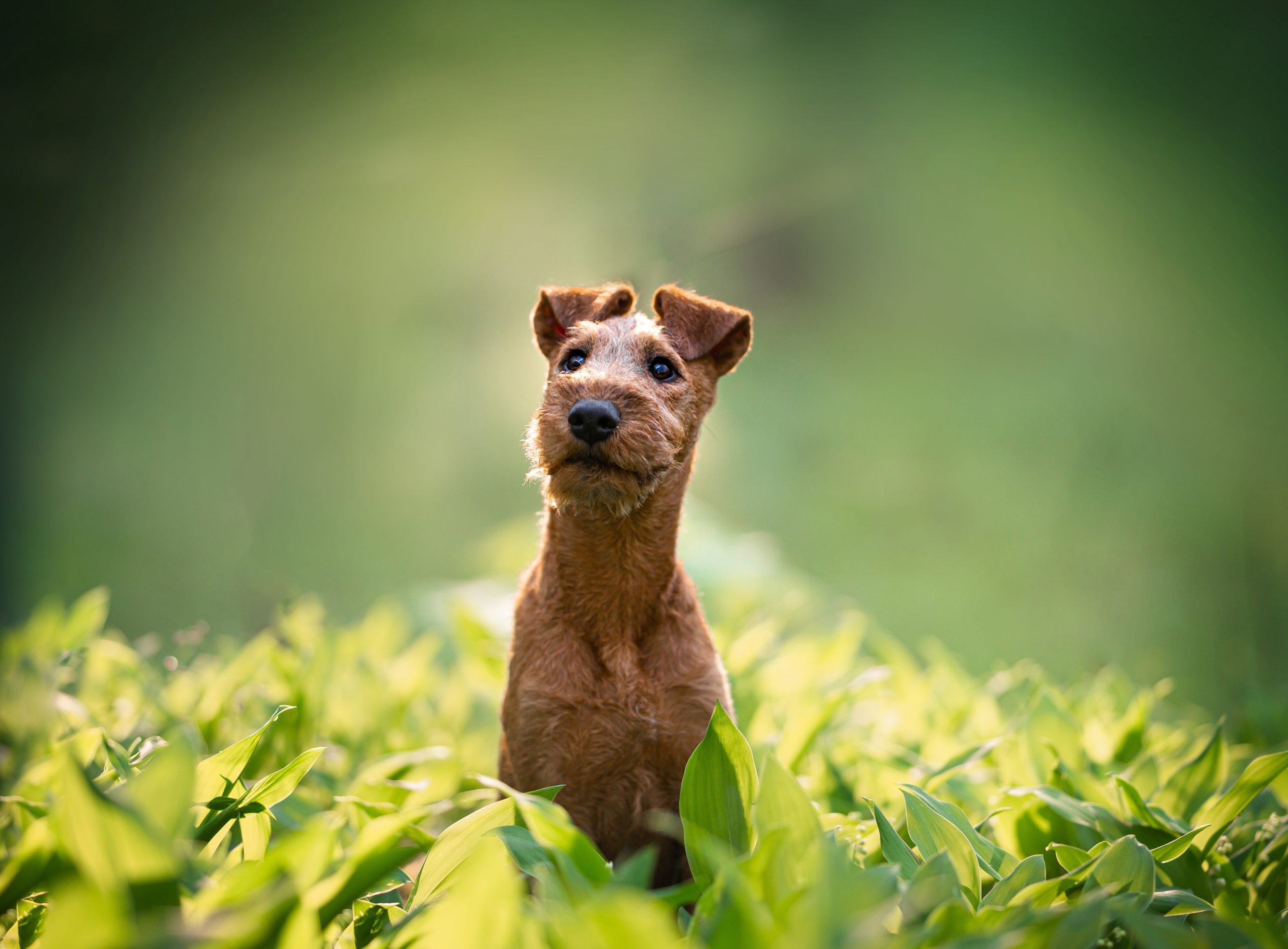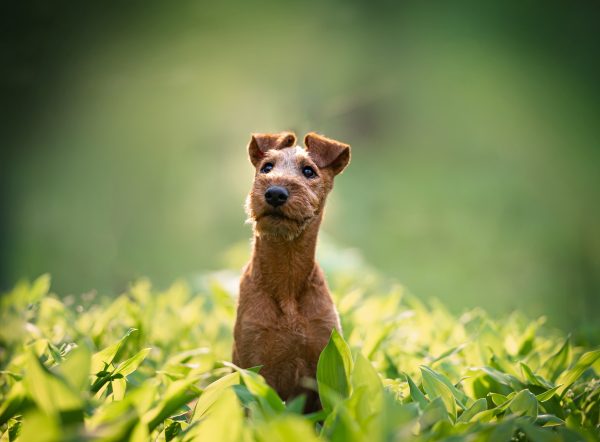Click to Skip Ahead
With a fiery attitude and an even redder coat, the Irish Terrier is ready to pounce on any vermin who catches their eye. Irish Terriers are considered “one of the finest dogs on earth,” given their versatility on the field and in the home. Let’s learn a bit more about this cute and energetic breed.
Breed Overview
Height:
18 inches
Weight:
25 to 27 pounds
Lifespan:
13 to 15 years
Colors:
Bright red, golden red, red wheaten, wheaten
Suitable for:
Active families or singles with experience in dog ownership
Temperament:
Even-tempered, spirited, affectionate
Irish Terriers have a work ethic you can’t ignore. Unlike herding and retrieving breeds, Irish Terriers don’t rely heavily on commands, making them a truly independent breed. Sometimes, their independence gets the best of them and their stubbornness takes over, but these dogs genuinely want to please their masters and will work hard to do so.
Irish Terrier Breed Characteristics
Irish Terrier Breed Puppies
Irish Terrier puppies are very social babies and fast learners, so housebreaking is generally not a problem for this breed. To locate a responsible and trustworthy breeder, you can search the Irish Terrier Club of America.1 The ICTA also has a rescue branch in case you’re looking to adopt. Other times, you can find Irish Terriers in local rescues.
Irish Terrier Breed Origin & History
For hundreds of years, Irishmen used Irish Terriers to hunt rodents, foxes, rabbits, badgers, and other small animals to serve in place of dog food. These little red daredevils kept farms clear of vermin and never had to be told where to hunt. Instinctively, they just knew where to go.
It’s unknown just how long Irish Terriers have been around. Some paintings from the 1700s feature an Irish Terrier, but some believe the breed goes back to ancient times. Like all terriers, Irish Terriers are believed to descend from the Old English Black and Tan Terrier.
Until the 1870s, Irish Terriers could have several coat colors. Eventually, the breed standard was set on a whole colored dog of varying red shades. In 1885, the AKC recognized the breed, and the Irish Terrier Club of America was formed in 1897.
During WWI, Irish Terriers acted as war dogs and combat messengers and proved to have a natural military-protective instinct. Lt. Col. E H Richardson quoted, “Many a soldier is alive today through the effort of one of these very terriers.”

Temperament & Intelligence of the Irish Terrier
Irish Terriers are good-tempered, affectionate, and loyal with a good dose of the terrier spirit. They’re fiery and brave in the field but loving and gentle around those they love. These dogs are known to be extraordinarily faithful and are very protective of their loved ones—sometimes to a fault.
Irish Terriers are brilliant dogs who gladly accept challenges from other dogs. They are “in charge” of their territory and meet anyone head-on who dares cross that boundary. Despite their vigilant personality, Irish Terriers seem to know how to be gentle and affectionate as well, making them excellent therapy dogs.
Are These Dogs Good for Families? 👪
Irish Terriers are great additions to the home. They love children and are very affectionate with family. The best home is with an active family with no other pets.
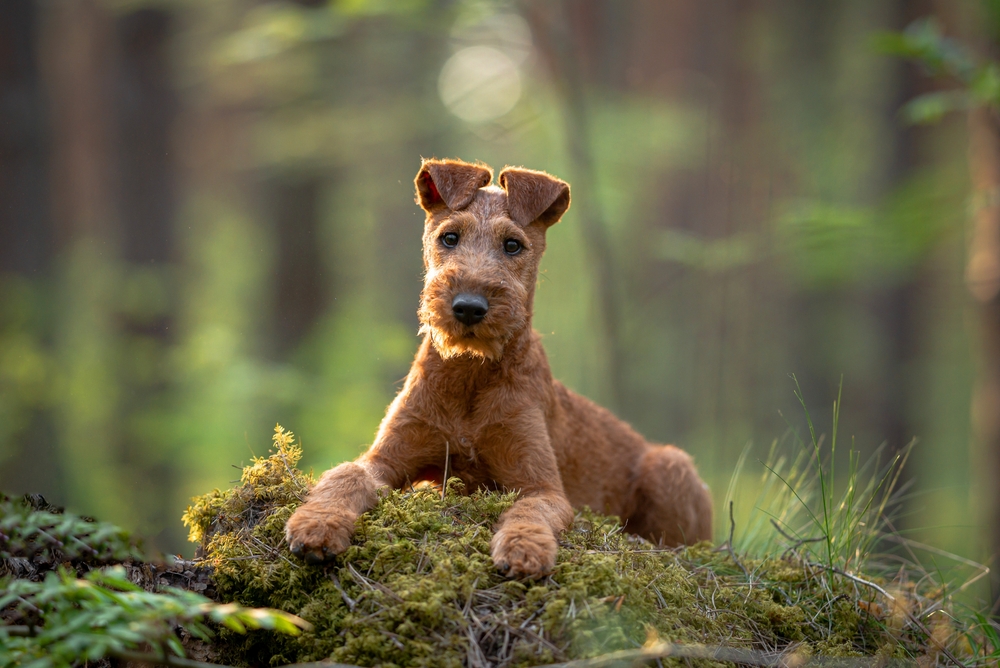
Does This Breed Get Along With Other Pets? 🐶 😽
Given their determined personality and prey-driven instincts, it’s generally not recommended to keep Irish Terriers with other dogs and small animals. However, if raised from a young age, Irish Terriers can get along with most dogs. The exception would be same-sex, unaltered males.
Things to Know When Owning an Irish Terrier:
Food & Diet Requirements 🦴
Irish Terriers do very well on high-quality dry dog food or a homemade diet. Your veterinarian should help regulate a homemade diet so your Irish Terrier receives all the necessary nutrition. No matter the diet, it should represent your dog’s needs for his age and energy levels. Limit treats and have clean, fresh water available at all times.
Exercise 🐕
Irish Terriers are high-energy dogs but not continuously active like some other breeds. They require daily walks—sometimes more than one—to stay physically fit and on their A-game. A fenced backyard is ideal but not required. Obedience training, dog sports, and hunting are excellent options for the Irish Terrier. All in all, just make sure they get at least an hour of exercise every day.
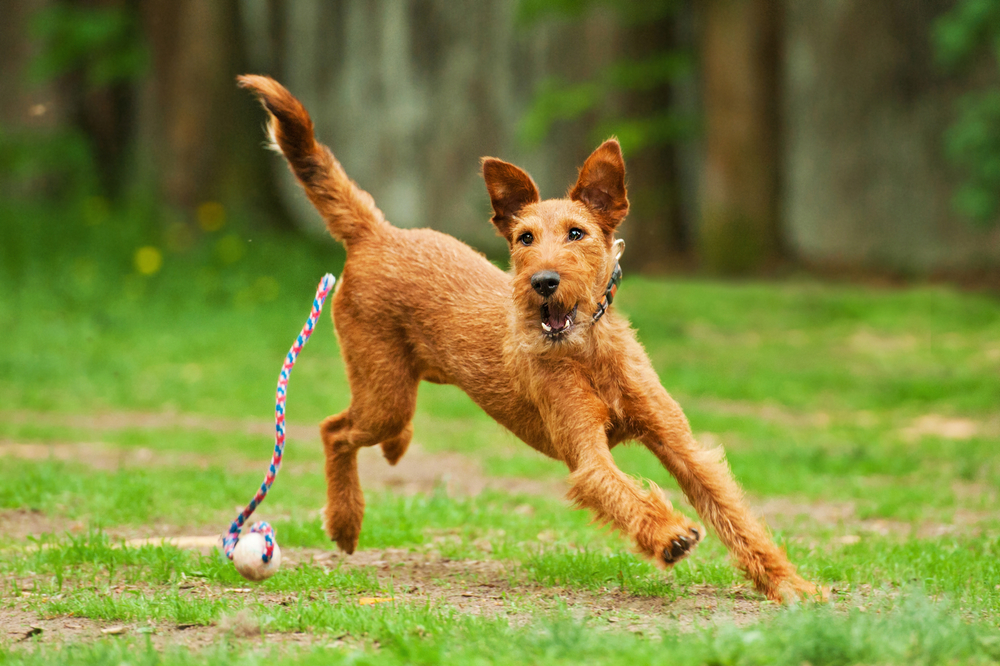
Training 🎾
Irish Terriers are willful and need a patient owner who can be firm but not harsh. Luckily, the breed is easy to please and wants to do a good job for their masters.
Because of their independence and curiosity, the command “come” is the hardest command to teach your Irish Terrier. With a little patience and consistency, your Irish Terrier will learn. Training sessions should be short and interesting since most Irish Terriers grow bored easily.
Obedience training is a must for any breed, especially for Irish Terriers. Obedience training will keep their ego in check and sharpen their minds as well.
Because of their history with hunting, Irish Terriers excel in various dog sports, like agility, tracking, rally, barn hunting, and more. No matter what you choose, your Irish Terrier will have a blast.
Grooming ✂️
Irish Terriers have a wiry double coat with a softer coat underneath. They have medium-length fur that should be hand-stripped instead of trimmed. Irish Terriers hardly ever shed or drool and only require monthly maintenance, so people looking for a hypoallergenic breed may enjoy having an Irish Terrier.
Nail trims, teeth brushing, and ear cleaning should all be done weekly so your Irish Terrier stays comfortable and feels fresh.
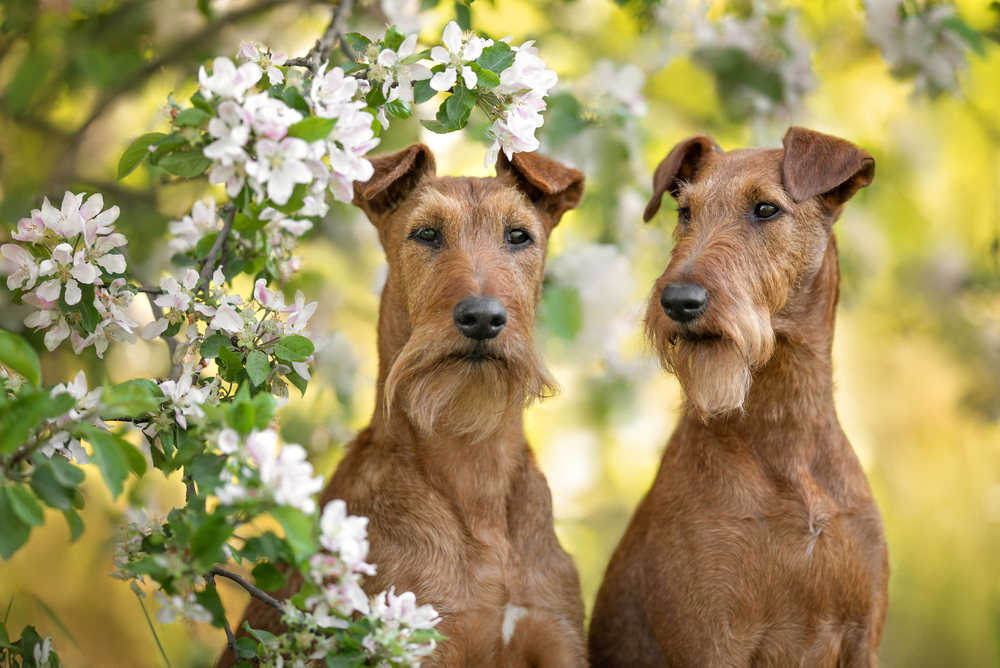
Health and Conditions 🏥
Irish Terriers are resilient and have no major health concerns except occasional bladder stones. All terriers have a sensitivity to environmental allergies, so talk to your veterinarian right away if you notice any discomfort in your Irish Terrier. As with all dogs, regular check-ups, nutrition, and exercise can ensure your Irish Terrier stays healthy.
- Cracked footpads
- Bladder stones
Male vs. Female
Male Irish Terriers have no noticeable differences in their appearance or demeanor except that females are slightly smaller than males.
3 Little-Known Facts About the Irish Terrier
1. The Name “Terrier” Is Latin for “Earth Dog”
The word “terrier” suits the breed beautifully. Whether a short-legged or long-legged terrier, these dogs are no match for the vermin underground. The first known use of the word stems from the 15th century.
2. Of All the Terriers, the Irish Terrier Has the Longest Body
Some terriers have short legs, while some have long ones. Irish Terriers are considered long-legged terriers and have the long legs and back of all the terrier breeds.
3. The Irish Terrier Is One of the Oldest Terrier Breeds
Although their origin is a mystery, Irish Terriers are still one of the oldest native terriers in Ireland.
Final Thoughts
Irish Terriers are courageous and affectionate dogs who are very protective of their owners. They have the fiery terrier spirit that puts them in charge of any situation. Irish Terriers are equally affectionate and possess an undying faithfulness to their owners. The best owners can give them daily walks and a place to run and practice those hunting skills that are hot-wired into their DNA.
Featured Image Credit: Mariya Kuzema, Shutterstock

